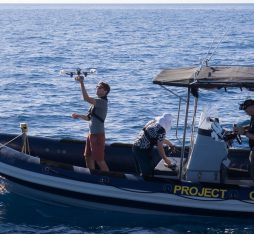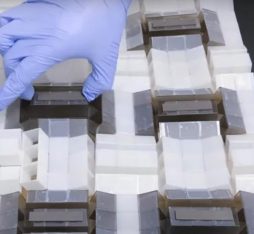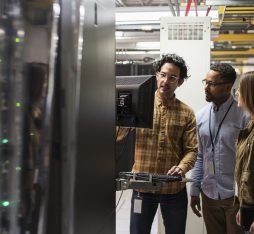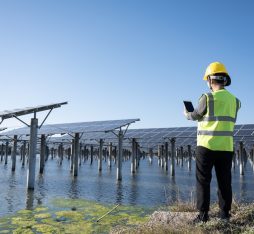For Nicolas Demassieux, head of research at Orange, and for his teams of researchers, the way forward is clear: “manufacturers, entrepreneurs, industrial firms, operators, sociologists, anthropologists, developers, designers, users, researchers…join us to help shape a chosen innovation that is responsible and will drive progress for everyone”.
“By opening these three Plug’in, Thing’in and Home’in research platforms today, Orange is calling on the business world, academics and general consumers to help shape tomorrow’s revolutions!”
Integrative research means aligning ourselves around a shared goal to invent the next revolutions in terms of technology and uses. How is Orange organising its research to make this happen?
ND: Integrative research is research that is open and widely engages with stakeholders from within the value chain and society. For a global approach to research, we are working upstream to look into the links and interactions both between our technological components and with users.
To understand these relationships and interactions, we need to constantly engage with society. Establishing research that carefully listens to the requirements involved and understands the transformations. Research that can also effectively make all these ideas, and above all the societal or ethical stakes involved, clear and understandable.
So, there is not any clear path mapped out or milestones in place! We want to establish this vision for research as a standard, and we will be developing this project working hand-in-hand with our stakeholders who share this approach. Our goal is to open up areas where everything needs to be explored, building a future that benefits everyone, from users to public research institutes, start-up and industrial firms.
Orange now offers three research platforms. What do they specifically cover?
ND: Three major revolutions are going to lead to in-depth changes in the interactions between our physical and digital worlds over the next 5 to 10 years. So we have three platforms to accompany these challenges. The “Plug’in” platform is focused on ambient 5G connectivity, “Thing’in” covers the internet of things and “Home’in” is targeting smart homes.
At a time when ambient connectivity is now almost as vital for human activity as the air we breathe, Plug’in aims to capitalise on the new possibilities opening up with ultra-high speed broadband. This will be more efficient from 2020, particularly from an energy perspective. 5G will make it possible to guarantee connectivity for critical applications and connect billions of objects.
Networks will essentially become software features (software-defined networks). They will use new technologies based on software and the cloud (on-demand networks) and will incorporate artificial intelligence (cognitive networks). This will revolutionise the way we conceive and operate them in terms of efficiency, security and availability, or even the way we sell them.
The internet of things, the focus for Thing’in, also seems to offer a wide range of new opportunities…
ND: The internet of things on a very wide scale is a result of the widespread connection of sensors to the internet and local intelligence. Tomorrow, the internet will have sensory capabilities thanks to billions of sensors measuring all sorts of parameters for the physical world (environmental, biological, industrial data, etc.). It will also benefit from billions of activators making it possible to take action on the physical world, from our cities to industry, medicine or agriculture.
In this way, we will move from an internet of things, reduced to technical connections for individual objects, to a real web of known and shareable things within which objects will be able to interact on an application level to perform complex tasks.
Lastly, the Home’in platform is focused on smart digital homes. What opportunities are opening up for us in this area?
ND: Personal assistants like Djingo are already offering a simple, unique interface for controlling your home systems, accessing third-party services or more generally interacting with the digital world.
In the future, thanks to artificial intelligence, these assistants will evolve to become real advisers, with a responsible approach, protecting our privacy. They will be able to converse and reason with us, while respecting each home’s habits and personalities, and adapting their advice for us accordingly.
You will be unveiling these three platforms at the Research Fair. What are your expectations with this presentation?
ND: These 3 platforms set out an outstanding ambition. They are platforms for technological integration and in-vivo experimental spaces, as well as vehicles for shared research between research and innovation stakeholders and users.
We will be able to join forces with stakeholders who share our vision for a fully digital and human future, providing our know-how and our capacity for innovation. Together, we will carry out research work on technologies or uses with a focus on ambient connectivity, the internet of things and smart homes.
How could you sum this up?
ND: By opening these three Plug’in, Thing’in and Home’in platforms today, we are calling on you to help shape tomorrow’s revolutions with us!











